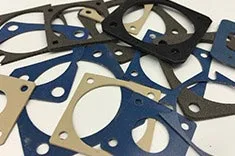EMI Shielding Products
- Custom Gasket Fabrication
- Connector Gaskets
- Bonded O Ring
- Custom Gaskets
- Conduct-O-Knit Knitted Wire Mesh
- Conduct-O-Seal Combo Gasket
- Conduct-O-Elastomer
- Conduct-O-Seal Oriented Wire in Silicone Gasket Material
- Conduct-O-Mesh Tape
- Conduct-O-Foam
- Conduct-O-Bond
- Optical Filters For Electronic Displays
- Shielded Vent Panels
- ESC Board Level Shielding
- 300 Series
EMI Shielding Materials and Techniques
 EMI (Electromagnetic Interference) shielding is indispensable for seamless electronic operation. This overview delves into EMI shielding substances and techniques for safeguarding electronic schematics.
EMI (Electromagnetic Interference) shielding is indispensable for seamless electronic operation. This overview delves into EMI shielding substances and techniques for safeguarding electronic schematics.
EMI shielding substances include metallic laminae and adhesive strips, like aluminum or copper, providing a conductive barrier against interference. Conductive varnishes and encompassments combine base materials with conductive particles, such as silver or copper, creating a conductive layer that blocks EMI.
EMI shielding techniques are broadly classified into casing and cord deflection. Casing deflection constructs a conductive barrier around electronic components, while cord deflection curtails EMI in cords transmitting signals or power.
Key methodologies for casing deflection include Faraday encasements, metallic casings that wholly encompass electronic components, and conductive encompassments and varnishes applied to non-metallic casings. Cord deflection techniques contain woven shielding, lamina shielding, and amalgamated shielding, which merges woven and lamina shielding for maximal EMI protection.
Factors such as frequency range, material compatibility, environmental conditions, mechanical robustness, and cost-effectiveness should be considered to ensure optimal EMI shielding performance.
Advancements in EMI shielding include nano-composite materials, frequency-selective surfaces, and smart shielding technologies. Nano-composites merge nanoparticles with traditional shielding materials for improved EMI deflection. Frequency-selective surfaces contain patterns that selectively reflect or transmit electromagnetic waves of specific frequencies. Smart shielding dynamically adjusts EMI deflection properties in response to the environment.
In conclusion, understanding EMI shielding materials and techniques is vital for electronic designers and engineers to minimize EMI's impact and enhance electronic design performance. The continued evolution of EMI deflection technologies remains crucial in the ever-growing electronics landscape.



